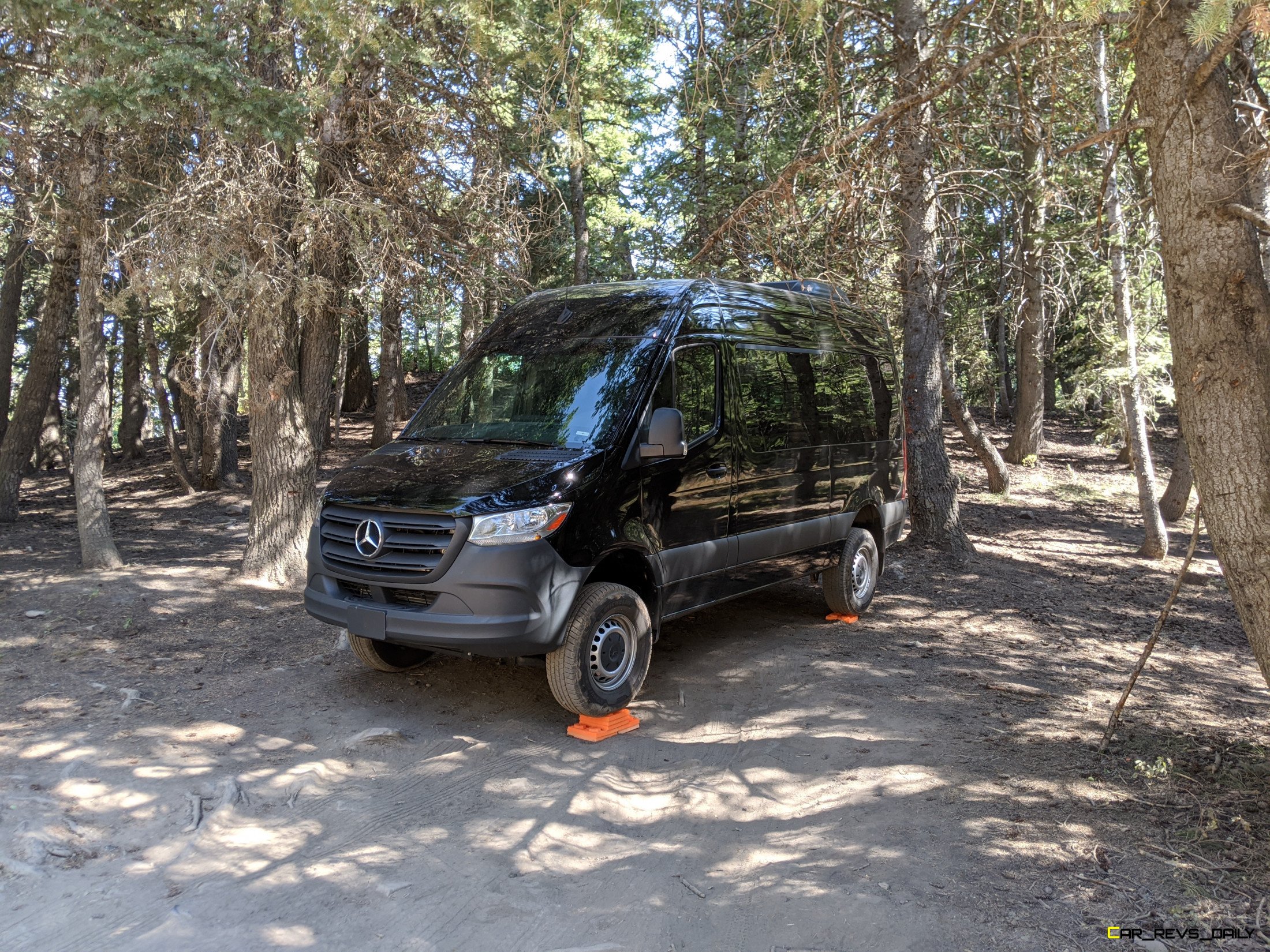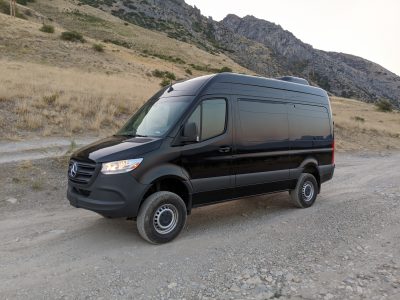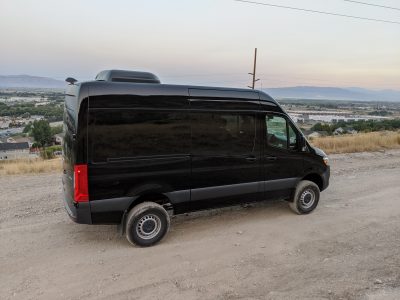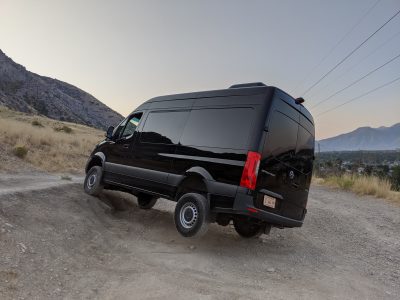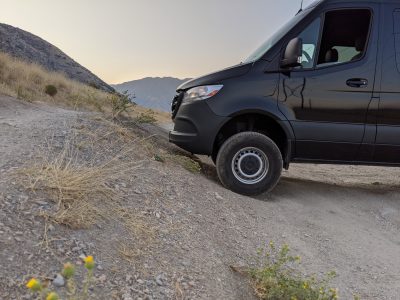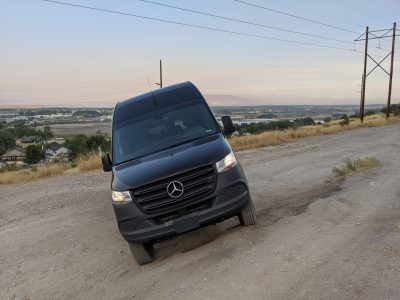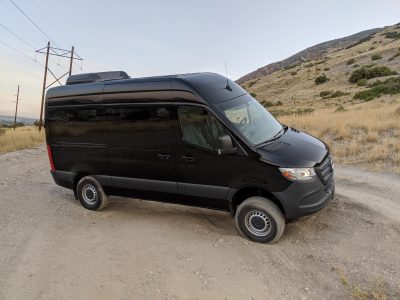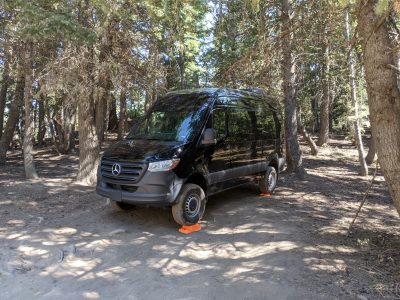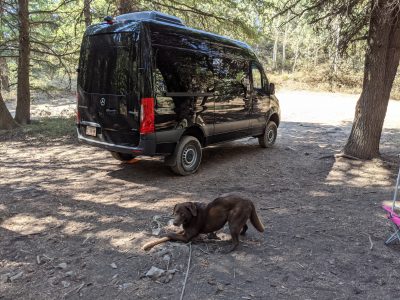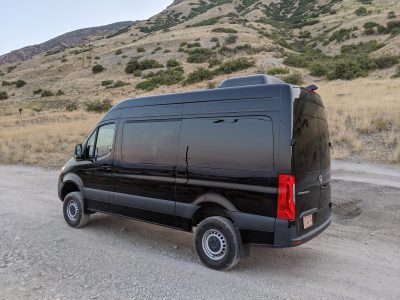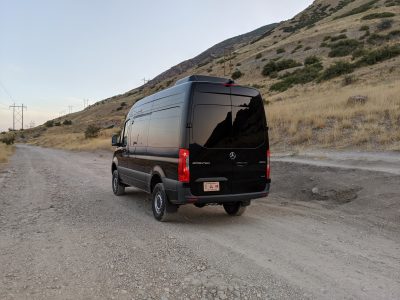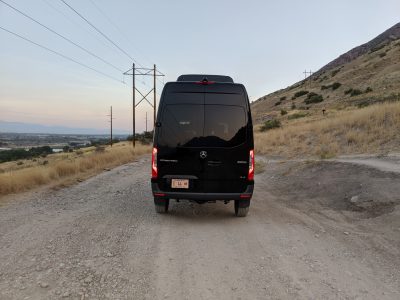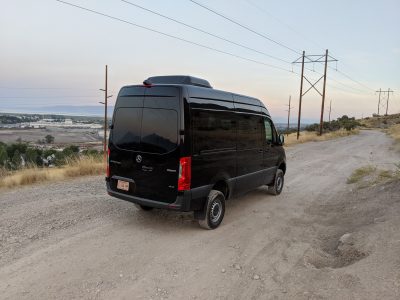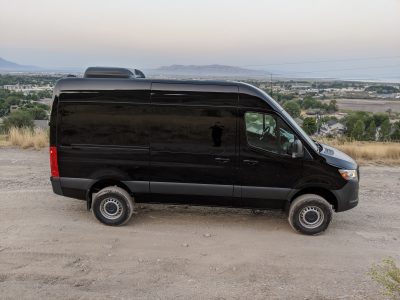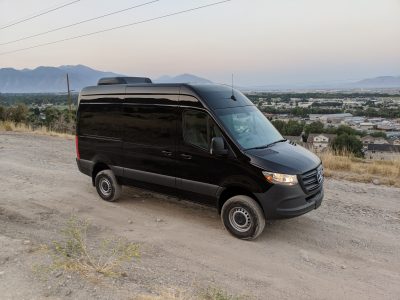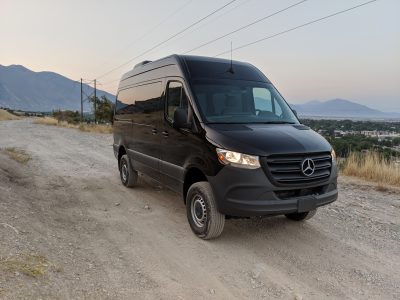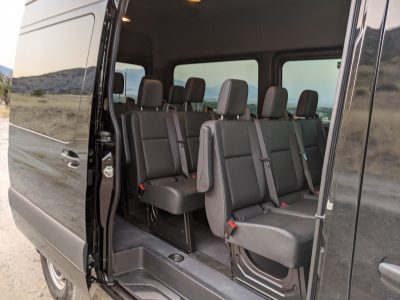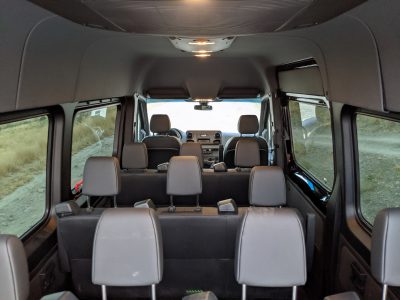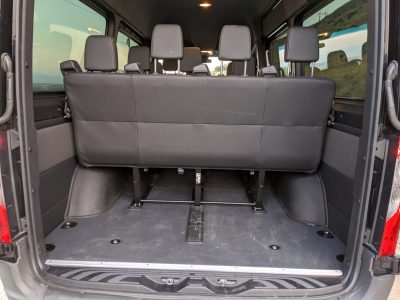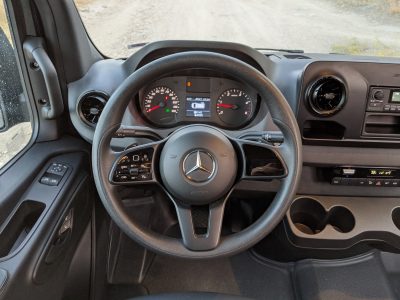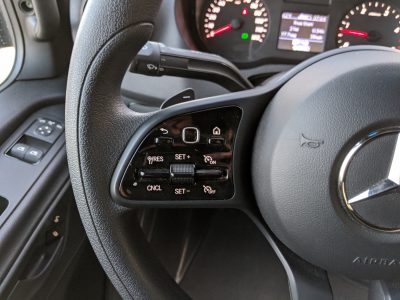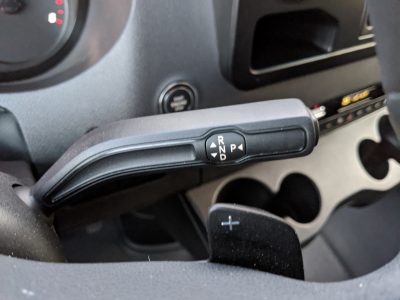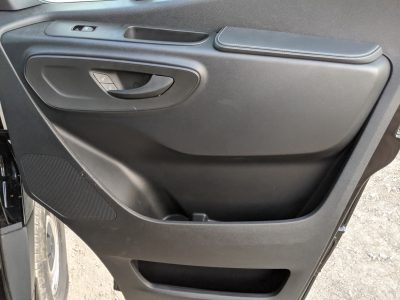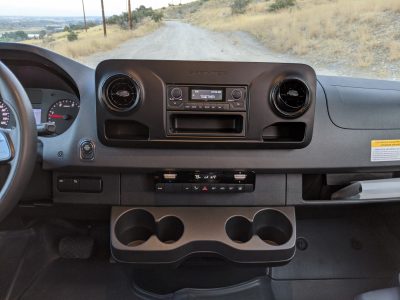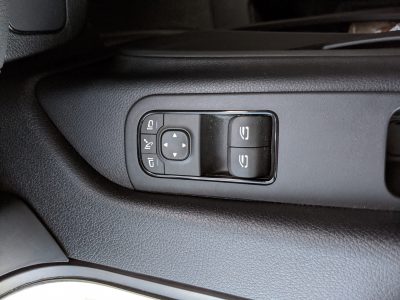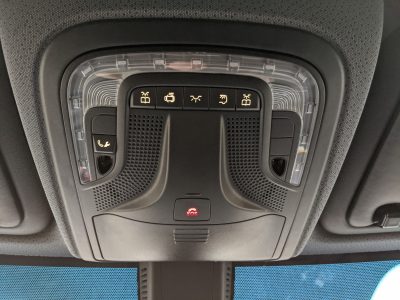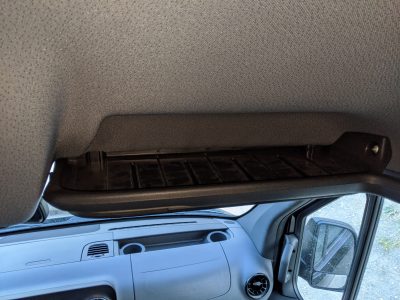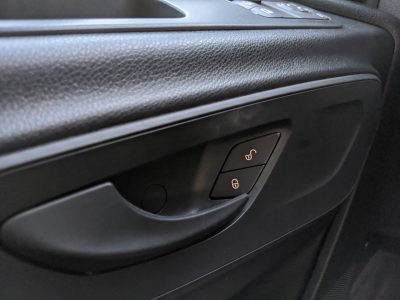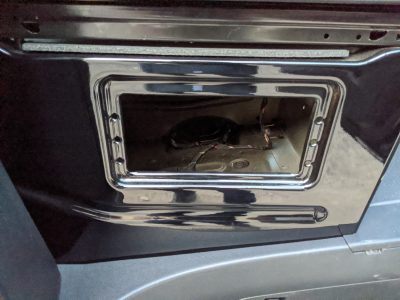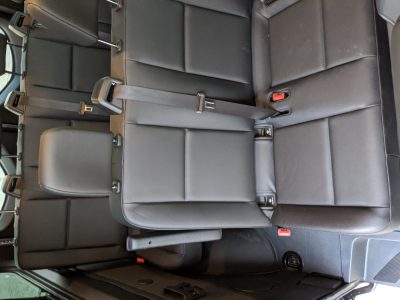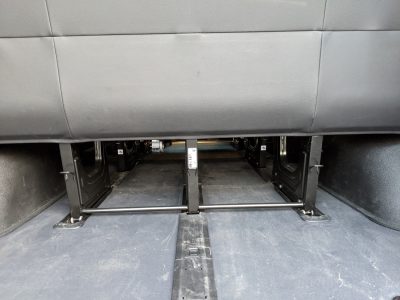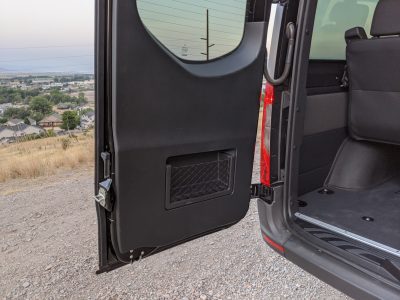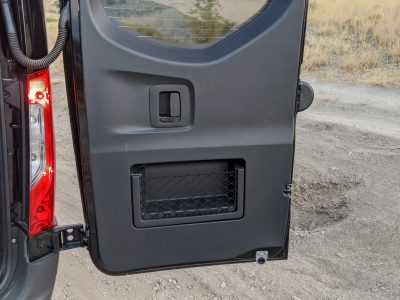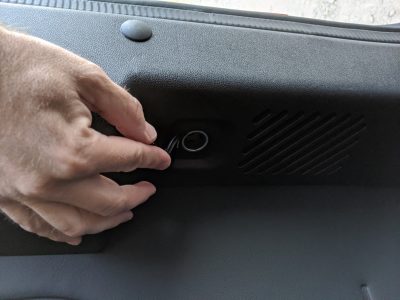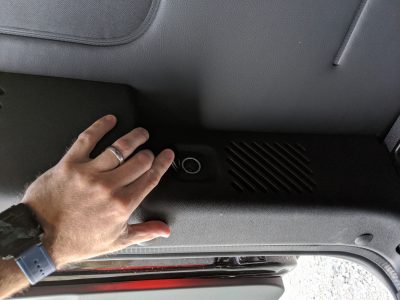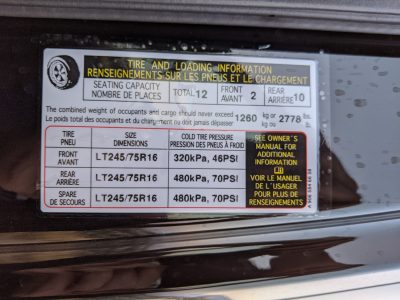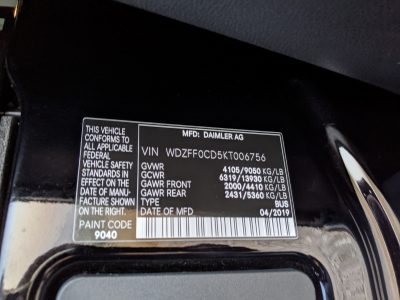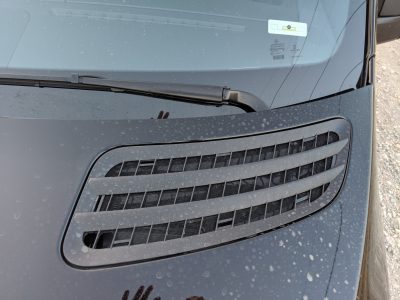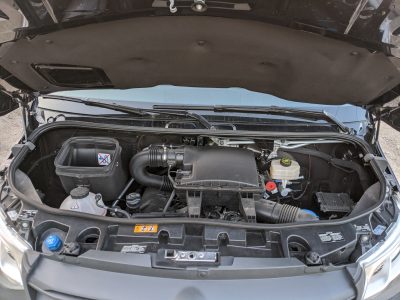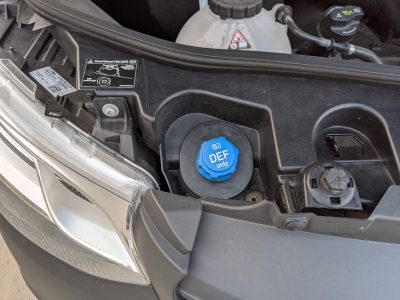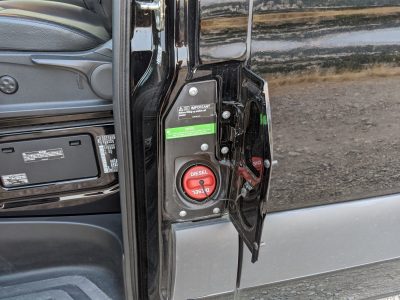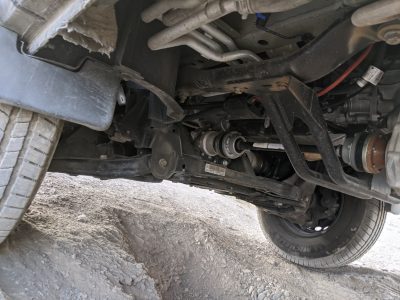Mercedes offers over 30 configurations of the Sprinter van, suiting a wide variety of needs. The Sprinter also offers the only true 4wd system in the class. Ford has an AWD system for the transit van and all others in the class are 2wd.
Mercedes sent us a 12-passenger high roof 4wd Sprinter 2500 to evaluate for a week. All 4wd models are equipped with a 3.0-liter V6 turbo diesel engine and 7-speed automatic transmission.
4wd System
Sprinter vans are often converted into capable motorhomes for adventurists. The factory 4wd system is a big plus for those leaving the beaten path.
In order to fit the transfer case and other 4wd components, the 4wd Sprinter is lifted about 6 inches higher than a 2wd Sprinter. The transfer case has a high and low range, with the low range ratio being 1.42:1. This gives it a total crawl ratio of 26:1. While this is not a very high gear reduction ratio when compared to pickup trucks, it is the best of any van sold in the U.S.
Mercedes sets the torque split in the transfer case at 35/65 front to rear from the factory. This is the same whether in 4wd high or 4wd low. To transfer power side to side, the Sprinter uses 4ETS (4-wheel Electronic Traction System). This is a traction system that applies the brakes to the spinning wheels, which then allows power to be transferred to the wheels with torque.

On-Road Driving
Having driven the 3500 cargo version in the past, we were impressed with how much better the 2500 passenger version is to drive. Having the additional seats, interior panels, and flooring makes a huge difference for sound damping from both the road and inside the van.
The seats are mostly manually adjustable, except for the powered lumbar support. They are 14-way adjustable to provide for a comfortable seating position and promote good posture. This adjustability greatly reduces fatigue on longer drives.
City driving can be a little awkward, as there is a lot of turbo lag in the V6 diesel engine. Once the turbo kicks in, the van accelerates surprisingly fast. For its large size, the Sprinter is surprisingly easy to maneuver and park. This is due to the cab forward design which provides for excellent site lines looking forward. Reversing can be a little tricky, as the backup camera is mounted very high up and the screen is in the mirror, making it small. If you are used to using the side mirrors to back up, then it’s pretty similar to any other vehicle.
At highway speeds it’s quiet enough for easy conversation. This is not a go-fast vehicle, and cruising at 80 mph is the practical limit. At over 9 feet tall, the center of gravity is quite high, causing the van to lean in the corners more than most other vehicles.
Getting Into the Rough Stuff
Off-road, the van is capable for its size. The ride is too harsh for high speed driving on rough roads, and the high center of gravity can make off camber situations a little scary. It quickly runs out of capability in 2wd, but pushing the button to engage 4wd makes a massive difference. Just like city driving on-road, the turbo lag is a big detriment off-road. The gearing is high, and a lot of throttle is required to make small climbs. Once the rpm’s get up, the van will sprint forward.
To reduce the turbo lag effect, shifting the transmission into neutral and pushing the 4wd low button will make a world of difference. Once 4wd low is engaged and the transmission is placed into 1st gear, making climbs smoothly is a breeze. That gear reduction in the transfer case is just enough to create enough torque at the wheels to climb even with the engine at low rpm.
4ETS is effective in most situations. Not having the transfer case lock with a 50/50 split is a hinderance, which puts more strain on the braking system. There are times where both rear wheels will spin and very little power will be transferred to the front axle. This only happened once in our testing and was quickly overcome with a little bit of momentum.
In cross axle situations, 4ETS works really well at braking the spinning wheels and transferring power to the wheels with traction. There was little wheel articulation, but that is to be expected from a vehicle with such a high payload capacity.
Pricing
Our test model was a 2019 Sprinter 2500 Passenger Van with the 144-inch wheelbase. It has a base price of $48,990. The additional options include upgraded paint for $1,015, leatherette black upholstery for $400, cruise control for $250, front seat arm rests for $33, upgraded comfort driver and passenger seats for $225 each, the comfort package for $690, driver convenience package for $1,210, and 4×4 system for $7,800. There were also a series of credits totaling $700 and the destination charge of $1,195. This brings the total price to $61,333. This is about $7,000 more than a similarly equipped AWD Ford Transit
Conclusion
When looking at this class of van the Sprinter is the only option with a true 4wd system. When looking for a cargo van that will be used in inclement weather or for camping down rough gravel and dirt roads, the 4×4 Sprinter van is an excellent option. The 4wd system works well for normal to moderate off-road use, and the Sprinter is known and used worldwide for its cargo capacity.
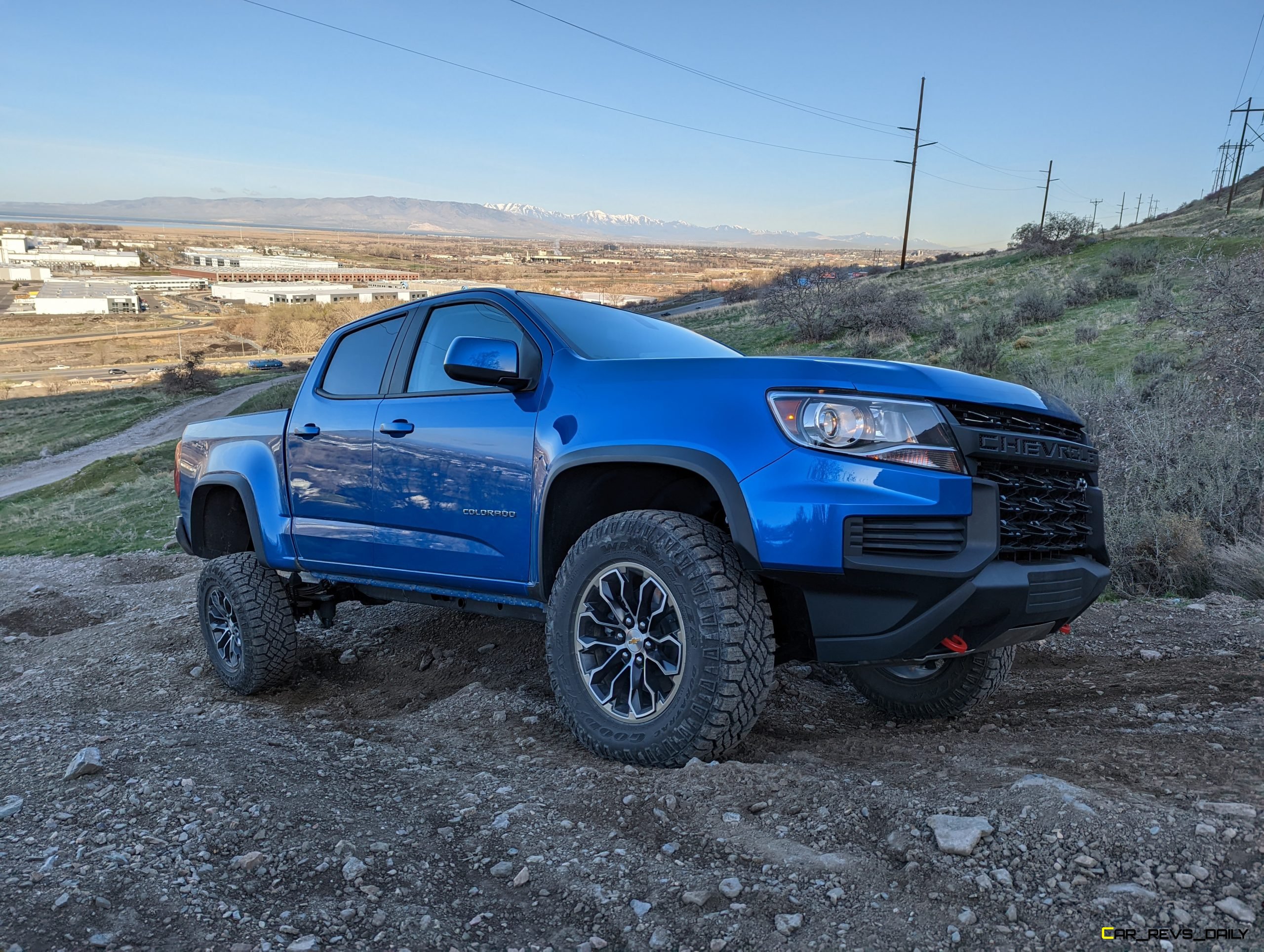
Matthew Barnes is an experienced towing expert. He works as a mechanical engineer and his day job involves testing a variety of vehicles while towing trailers of all types and sizes. Matt shares his knowledge by writing for automotive news outlets in the evenings. When he’s not working he can be found spending time in the great outdoors with his family. He enjoys camping, hiking, canyoneering, and backpacking. Whenever possible he spends time riding in or on any power sports vehicle he can find and claims he can drive anything with a motor, which probably isn’t true.
Matt lives in the Utah mountains and often posts cool off-roading videos to his Instagram and YouTube channel.

